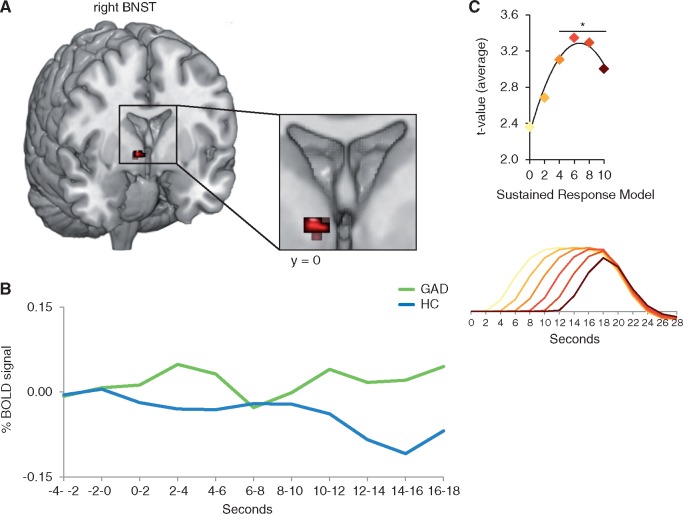Fig. 3.
Elevated bed nucleus of the stria terminalis activity to threat minus neutral anticipation in patients relative to healthy controls. (A) Generalized anxiety disorder (GAD) patients relative to healthy controls (HC) responded with elevated sustained, but delayed bed nucleus of the stria terminalis (BNST) activity to threat minus neutral anticipation for all Sustained Response General Linear Models (GLM) with a delayed onset of at least 4 s in a highly overlapping cluster. (B) Time courses of the blood oxygen level-dependent (BOLD) signal change, extracted from the overlapping BNST cluster (of the 4, 6, 8 and 10 s Sustained Response GLMs) and averaged across time points and participants per group, are displayed for the anticipatory epoch (threat minus neutral anticipation) starting 4 s before cue onset. (C) Quadratic regression analyses on the average t-values for the contrast threat minus neutral anticipation in GAD patients as compared to HC extracted from the overlapping cluster of all significant Sustained Response GLMs, revealed a significant quadratic relationship. The vertex of the function was at 6.69 s, suggesting a delayed onset of about 6–7 s of the differential sustained BNST effect. The lower graph displays all Sustained Response Models. *P < 0.05.

